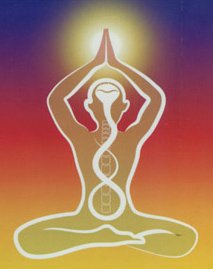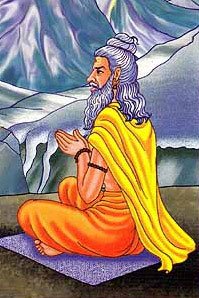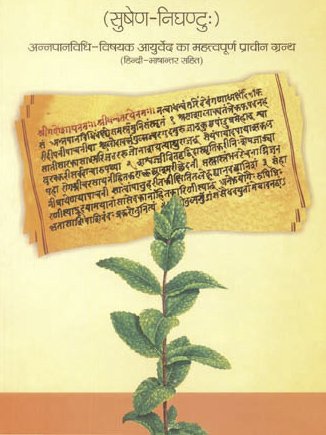Prakamya, Prakāmya, Prākāmya: 16 definitions
Introduction:
Prakamya means something in Hinduism, Sanskrit, Jainism, Prakrit, Marathi. If you want to know the exact meaning, history, etymology or English translation of this term then check out the descriptions on this page. Add your comment or reference to a book if you want to contribute to this summary article.
In Hinduism
Yoga (school of philosophy)
Source: Wisdom Library: YogaPrakāmya (प्रकाम्य) is a Sanskrit word referring to the “ability to become irresistible”, as described in the Yoga Sūtras of Patañjali.
Source: ORA: Amanaska (king of all yogas): A Critical Edition and Annotated Translation by Jason BirchPrākāmya (प्राकाम्य) refers to “(the supernatural power of) being able to obtain whatever is desired”, and as one of the “eight common Yogic paranormal powers”, represents one of the various signs and paranormal powers (siddhi) experienced by the Yoga practicioner, according to the Amanaska Yoga treatise.—The last fifty-two verses of the Amanaska’s first chapter describe a temporal sequence of psychosomatic signs and paranormal powers (siddhi) brought about by absorption (laya). In the Amanaska, The 8 common yogic paranormal powers are, [e.g., the power to obtain whatever is desired (prākāmya)], [...] This list is similar to that given in Pātañjalayogaśāstra 3.45.

Yoga is originally considered a branch of Hindu philosophy (astika), but both ancient and modern Yoga combine the physical, mental and spiritual. Yoga teaches various physical techniques also known as āsanas (postures), used for various purposes (eg., meditation, contemplation, relaxation).
Purana and Itihasa (epic history)
Source: archive.org: Shiva Purana - English TranslationPrākāmya (प्राकाम्य) refers to the “power of sufficiency”, representing the achievements of the south-eastern petal of the Aṣṭadala (mystical diagram of the lotus of eight petals), according to the Śivapurāṇa 2.1.11, while explaining the mode of worshipping Śiva:—“[...] the Liṅga shall be purified and installed with various mantras beginning with Praṇava and ending with Namaḥ (obeisance). The pedestal in the form of Svastika or lotus shall be assigned with Praṇava. In the eight petals, in the eight quarters, the eight achievements are identified [viz., the south-eastern is Prākāmya (power of sufficiency)]”.
Source: Cologne Digital Sanskrit Dictionaries: The Purana IndexPrākāmya (प्राकाम्य).—An Uttama siddhi;1 a yogaiśvarya.2

The Purana (पुराण, purāṇas) refers to Sanskrit literature preserving ancient India’s vast cultural history, including historical legends, religious ceremonies, various arts and sciences. The eighteen mahapuranas total over 400,000 shlokas (metrical couplets) and date to at least several centuries BCE.
Ayurveda (science of life)
Source: gurumukhi.ru: Ayurveda glossary of termsPrākāmya (प्राकाम्य):—[prākāmyaṃ] The power of having an irresistible will, one of the supra normal psychic power derivable from the practice of Yoga

Āyurveda (आयुर्वेद, ayurveda) is a branch of Indian science dealing with medicine, herbalism, taxology, anatomy, surgery, alchemy and related topics. Traditional practice of Āyurveda in ancient India dates back to at least the first millenium BC. Literature is commonly written in Sanskrit using various poetic metres.
In Jainism
General definition (in Jainism)
Source: Encyclopedia of Jainism: Tattvartha Sutra 3: The Lower and middle worldsPrākāmya (प्राकाम्य) refers to “irresistible will” and represents one of the eleven types of extraordinary form-changing (vikriyā), which itself is a subclass of the eight ṛddhis (extraordinary powers). These powers can be obtained by the Ārya (civilized people) in order to produce worldly miracles. The Āryas represent one of the two classes of human beings according to the 2nd-century Tattvārthasūtra 3.46, the other being Mleccha (barbarians).
What is meant by extraordinary power to walk over water (prākāmya-riddhi)? It is the extraordinary power by which one walks over the surface of water of the ocean like walking on the surface of earth.

Jainism is an Indian religion of Dharma whose doctrine revolves around harmlessness (ahimsa) towards every living being. The two major branches (Digambara and Svetambara) of Jainism stimulate self-control (or, shramana, ‘self-reliance’) and spiritual development through a path of peace for the soul to progess to the ultimate goal.
Languages of India and abroad
Marathi-English dictionary
Source: DDSA: The Molesworth Marathi and English Dictionaryprākāmya (प्राकाम्य).—n S One of Shiva's eight attributes,--irresistible will or fiat.
Marathi is an Indo-European language having over 70 million native speakers people in (predominantly) Maharashtra India. Marathi, like many other Indo-Aryan languages, evolved from early forms of Prakrit, which itself is a subset of Sanskrit, one of the most ancient languages of the world.
Sanskrit dictionary
Source: DDSA: The practical Sanskrit-English dictionaryPrākāmya (प्राकाम्य).—
1) Freedom of will; प्राकाम्यं ते विभूतिषु (prākāmyaṃ te vibhūtiṣu) Kumārasambhava 2. 11.
2) Wilfulness.
3) Irresistible will, considered as one of the eight attributes or siddhis of Śiva or the Supreme Being; see सिद्धि (siddhi).
Derivable forms: prākāmyam (प्राकाम्यम्).
Source: Cologne Digital Sanskrit Dictionaries: Shabda-Sagara Sanskrit-English DictionaryPrākāmya (प्राकाम्य).—n.
(-myaṃ) 1. Irresistible will or fiat, one of the Siva'S eight attributes. 2. Wilfulness, following or obeying one’s own will or inclination. E. pra and āṅ before, kam to desire, aff. ṇyat .
Source: Cologne Digital Sanskrit Dictionaries: Benfey Sanskrit-English DictionaryPrākāmya (प्राकाम्य).—i. e. prakāma + ya, n. The faculty to perform what one lists, a magical power, [Lassen, Anthologia Sanskritica.] 3, 19.
Source: Cologne Digital Sanskrit Dictionaries: Monier-Williams Sanskrit-English Dictionary1) Prākāmya (प्राकाम्य):—[=prā-kāmya] [from prā] n. ([from] -kāma) freedom of will, wilfulness, [Mahābhārata; Kumāra-sambhava; Mārkaṇḍeya-purāṇa]
2) [v.s. ...] irresistible will or fiat (one of the 8 supernatural powers), [Monier-Williams’ Buddhism 245.]
Source: Cologne Digital Sanskrit Dictionaries: Yates Sanskrit-English DictionaryPrākāmya (प्राकाम्य):—[prā+kāmya] (myaṃ) 1. n. One of Shiva's eight attributes; his fiat; wilfulness.
Source: DDSA: Paia-sadda-mahannavo; a comprehensive Prakrit Hindi dictionary (S)Prākāmya (प्राकाम्य) in the Sanskrit language is related to the Prakrit word: Pākamma.
[Sanskrit to German]
Sanskrit, also spelled संस्कृतम् (saṃskṛtam), is an ancient language of India commonly seen as the grandmother of the Indo-European language family (even English!). Closely allied with Prakrit and Pali, Sanskrit is more exhaustive in both grammar and terms and has the most extensive collection of literature in the world, greatly surpassing its sister-languages Greek and Latin.
Kannada-English dictionary
Source: Alar: Kannada-English corpusPrākāmya (ಪ್ರಾಕಾಮ್ಯ):—
1) [noun] freedom of will; wilfulness; the condition of not being subject to another’s will.
2) [noun] irresistable will or fiat (as one of the eight supernatural powers).
Kannada is a Dravidian language (as opposed to the Indo-European language family) mainly spoken in the southwestern region of India.
See also (Relevant definitions)
Starts with: Prakamyasiddhi.
Ends with: Nishprakamya.
Full-text: Aishvarya, Siddhi, Vibhuti, Ashtasiddhi, Pakamma, Ashtamahasiddhaya, Prakamyasiddhi, Animan, Anvavasarga, Bhuti, Caturvimshati, Caturvimshativasara, Ipsita, Caturvimshatyaha, Caturvimshatidina, Prakama, Vikriya, Ashtadala, Paranormal power.
Relevant text
Search found 22 books and stories containing Prakamya, Prakāmya, Prākāmya, Pra-kamya, Prā-kāmya; (plurals include: Prakamyas, Prakāmyas, Prākāmyas, kamyas, kāmyas). You can also click to the full overview containing English textual excerpts. Below are direct links for the most relevant articles:
Chaitanya Bhagavata (by Bhumipati Dāsa)
Verse 2.9.189 < [Chapter 9 - The Lord’s Twenty-One Hour Ecstasy and Descriptions of Śrīdhara and Other Devotees’ Characteristics]
Verse 1.8.180 < [Chapter 8 - The Disappearance of Jagannātha Miśra]
The Markandeya Purana (Study) (by Chandamita Bhattacharya)
9. Outcome of Yoga Practice < [Chapter 4]
Yoga Vasistha [English], Volume 1-4 (by Vihari-Lala Mitra)
Chapter XIV - The different degrees of perfection < [The yoga philosophy]
Chapter LX - The network of worlds (continued) < [Book VII - Nirvana prakarana part 2 (nirvana prakarana)]
The Linga Purana (by J. L. Shastri)
Chapter 88 - Review of Pāśupata yoga < [Section 1 - Uttarabhāga]
Chapter 34 - Praise of the Yogin (yogi-praśaṃsānāma) < [Section 1 - Uttarabhāga]
Chapter 27 - Worship of Liṅga (liṅgārcana) < [Section 1 - Uttarabhāga]
The Padma Purana (by N.A. Deshpande)
Chapter 166 - Pāṇḍurāryā-tīrtha < [Section 6 - Uttara-Khaṇḍa (Concluding Section)]
Chapter 18 - The greatness of Nandā-Prācī < [Section 1 - Sṛṣṭi-khaṇḍa (section on creation)]
Amarakoshodghatana of Kshirasvamin (study) (by A. Yamuna Devi)
Philosophy (2): Yoga (Patañjali) < [Chapter 4 - Cultural Aspects]